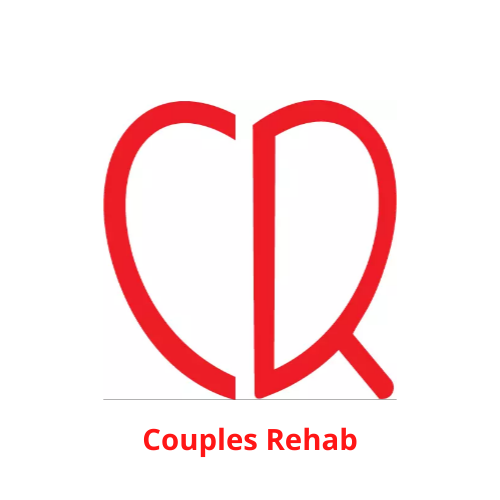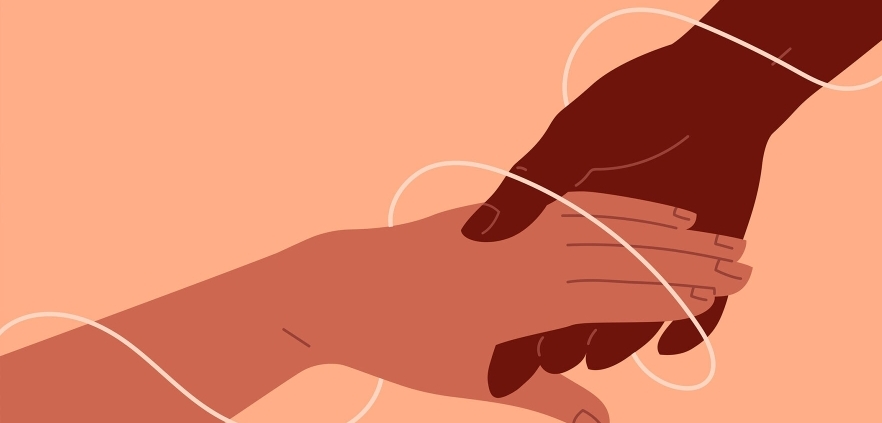Harm reduction strategies have become an integral part of the public health response to substance use disorders, particularly in Ohio. As addiction rates continue to climb, Ohio has embraced harm reduction programs aimed at minimizing the negative consequences of drug use while respecting individuals’ rights and autonomy. At Couples Rehab, located in Ohio, we are dedicated to providing comprehensive services that incorporate harm reduction strategies to help individuals and couples recover from addiction in a way that suits their unique needs.
In this article, we will explore the concept of harm reduction, discuss the various programs available in Ohio, evaluate their effectiveness, and explain how Couples Rehab integrates these strategies into our services.
What is Harm Reduction?
Harm reduction refers to a set of practical strategies and ideas aimed at reducing the negative consequences associated with drug use. These strategies acknowledge that while some individuals may not be ready or willing to stop using substances entirely, steps can be taken to minimize the risks associated with their behavior. Harm reduction programs are non-judgmental and focus on improving the overall well-being of individuals by promoting safer practices, access to healthcare, and social support.
Some common harm reduction practices include:
- Needle exchange programs: Provide sterile needles to reduce the transmission of diseases such as HIV and hepatitis.
- Supervised injection sites: Allow individuals to use drugs in a safe, controlled environment where medical staff can intervene in case of an overdose.
- Naloxone distribution: Increases access to the opioid overdose-reversing drug, Naloxone (Narcan).
- Medication-assisted treatment (MAT): Provides individuals with FDA-approved medications such as methadone, buprenorphine, or naltrexone to manage withdrawal symptoms and reduce cravings.
At Couples Rehab in Ohio, we incorporate harm reduction strategies into our holistic treatment plans, which are customized to meet the individual needs of each person and couple seeking recovery.
The Importance of Harm Reduction in Ohio
Ohio has been at the epicenter of the opioid epidemic, with communities throughout the state deeply affected by overdose deaths and addiction-related harm. As a result, harm reduction strategies have gained significant traction in Ohio’s public health policy, providing life-saving support to individuals who may not be ready for abstinence-based programs.
At Couples Rehab, we recognize the importance of these strategies as part of a comprehensive approach to treating addiction. Our team of healthcare professionals works closely with individuals and couples to incorporate harm reduction techniques alongside therapeutic treatments designed to foster long-term recovery.
Types of Harm Reduction Programs in Ohio
Harm reduction programs in Ohio cover a broad spectrum, from syringe exchanges to overdose prevention education. These initiatives are vital in reducing the rates of overdose, infectious disease transmission, and other health complications associated with drug use.
1. Syringe Exchange Programs
Ohio has implemented several syringe exchange programs (SEPs) in key areas of the state. These programs provide clean needles and syringes to individuals who inject drugs, significantly reducing the transmission of blood-borne infections like HIV and hepatitis C. Participants are also provided with information about treatment resources and other health services, bridging the gap between active addiction and recovery.
At Couples Rehab, we support these efforts by ensuring that individuals entering our treatment programs are educated about the benefits of such harm reduction strategies. For couples dealing with addiction, reducing harm through proper education and resources is a key part of rebuilding their lives together.
2. Naloxone Distribution
Naloxone (also known as Narcan) is a life-saving medication that can reverse the effects of an opioid overdose. In Ohio, widespread Naloxone distribution programs have been introduced, allowing law enforcement officers, emergency medical services, and even family members of individuals struggling with addiction to carry the drug. The ease of access to Naloxone has made a significant impact on reducing overdose deaths throughout the state.
At Couples Rehab in Ohio, we incorporate overdose prevention education and Naloxone training into our treatment plans, ensuring that both individuals and their loved ones are equipped with the tools to prevent fatal overdoses.
3. Overdose Prevention Sites
While still a controversial topic in the United States, overdose prevention sites (OPS) have been shown to save lives in other countries. These sites offer a safe space for individuals to use drugs under medical supervision. Although Ohio does not yet have formal overdose prevention sites, harm reduction advocates continue to push for their implementation. The presence of these sites could prevent hundreds of overdoses and allow individuals to access resources and support to begin their recovery journey.
At Couples Rehab, we offer a compassionate, non-judgmental approach, helping couples navigate their options for harm reduction while working towards sustainable recovery.
4. Medication-Assisted Treatment (MAT)
MAT is a cornerstone of harm reduction, providing individuals with medications such as methadone, buprenorphine, or naltrexone to manage withdrawal symptoms and reduce cravings. MAT has been proven to lower the risk of relapse and overdose, especially when combined with counseling and behavioral therapies.
At Couples Rehab, we integrate MAT into our personalized treatment plans to help clients stabilize their substance use and begin their recovery process. This evidence-based approach ensures that individuals receive the support they need while working towards their long-term recovery goals.

Effectiveness of Harm Reduction Programs in Ohio
Research consistently shows that harm reduction programs are highly effective in reducing the negative consequences of drug use. According to data from the Ohio Department of Health, syringe exchange programs have contributed to a significant decrease in the transmission of HIV and hepatitis among people who inject drugs. Additionally, Naloxone distribution has directly saved thousands of lives, preventing opioid overdoses from becoming fatal.
At Couples Rehab, we see the positive impact of harm reduction every day. By incorporating these strategies into our treatment model, we can offer couples a more flexible, compassionate approach to recovery. Whether it’s through MAT, education, or relapse prevention, harm reduction helps our clients feel supported as they work towards a healthier future.
Couples Rehab and Harm Reduction
At Couples Rehab in Ohio, we believe that harm reduction is an essential part of the recovery process. While abstinence-based recovery may work for some, we understand that many individuals benefit from a more gradual approach to change. By integrating harm reduction strategies into our treatment programs, we offer couples the opportunity to heal together in a way that works for them.
Our comprehensive services include:
- Personalized treatment plans tailored to meet the unique needs of each individual and couple.
- Medication-assisted treatment (MAT) to help manage cravings and withdrawal symptoms.
- Therapy and counseling sessions designed to address the root causes of addiction and promote healthy communication between partners.
- Support groups and aftercare programs that focus on long-term recovery and preventing relapse.
Benefits of Harm Reduction for Couples
Harm reduction strategies offer several key benefits for couples recovering from addiction:
- Improved health outcomes: By reducing the risks associated with drug use, harm reduction helps individuals maintain better physical and mental health, which is crucial for long-term recovery.
- Strengthened relationships: Harm reduction allows couples to support each other through the recovery process, helping to rebuild trust and communication.
- Increased access to care: Harm reduction programs provide a pathway to healthcare services and addiction treatment for individuals who might not otherwise seek help.
At Couples Rehab, we emphasize the importance of supporting one another during recovery, using harm reduction strategies to ensure the safety and well-being of both partners.
FAQ Section
1. What is harm reduction in addiction treatment?
Harm reduction is a set of strategies aimed at minimizing the negative consequences of drug use without requiring complete abstinence. It focuses on improving health and well-being while reducing risks such as overdose and infectious diseases.
2. Is harm reduction effective in Ohio?
Yes, harm reduction programs in Ohio, such as syringe exchanges and Naloxone distribution, have proven to be highly effective in reducing overdose deaths and the spread of infectious diseases.
3. Does Couples Rehab use harm reduction strategies?
Yes, Couples Rehab integrates harm reduction strategies into our treatment plans, offering medication-assisted treatment, overdose prevention education, and personalized support for individuals and couples.
4. What is Naloxone, and how does it work?
Naloxone, also known as Narcan, is a medication that can reverse the effects of an opioid overdose by blocking opioid receptors in the brain. It can be administered as a nasal spray or injection.
5. What are syringe exchange programs?
Syringe exchange programs provide clean needles to individuals who inject drugs to prevent the transmission of blood-borne diseases like HIV and hepatitis C. These programs also offer access to treatment resources.
6. What is medication-assisted treatment (MAT)?
MAT involves using medications such as methadone, buprenorphine, or naltrexone to help individuals manage withdrawal symptoms and reduce cravings. MAT is often combined with counseling for effective recovery.
7. Are harm reduction programs safe?
Yes, harm reduction programs are designed to be safe and evidence-based. These programs reduce the risks associated with drug use, such as overdose and disease transmission, while promoting healthier behaviors.
8. How can couples benefit from harm reduction?
Couples can benefit from harm reduction by supporting each other through safer practices and accessing the care they need to recover together. This approach promotes better health outcomes and stronger relationships.
9. Can harm reduction lead to abstinence?
While harm reduction does not require abstinence, it can be a stepping stone towards it. Many individuals using harm reduction strategies eventually choose to pursue abstinence-based recovery.
10. How can I access harm reduction services at Couples Rehab?
To access harm reduction services at Couples Rehab, contact our Ohio-based center for a consultation. We offer personalized treatment plans tailored to the needs of individuals and couples.
Conclusion
Harm reduction strategies are a vital component of Ohio’s approach to addressing substance use disorders. At Couples Rehab in Ohio, we embrace these strategies to provide individuals and couples with the tools they need to reduce harm and work towards lasting recovery. Whether through syringe exchange programs, Naloxone distribution, or medication-assisted treatment, harm reduction offers a compassionate, evidence-based approach that meets individuals where they are in their journey.
Contact Couples Rehab today, our mission is to help couples heal together, using harm reduction as a foundation for long-term health and wellness. By incorporating these strategies into our comprehensive treatment plans, we provide a path to recovery that is both effective and supportive.











